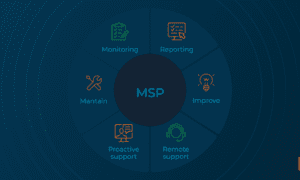In a world that thrives on constant connectivity, the idea of being without signal inside a building isn’t just inconvenient, it’s dangerous. Whether it’s a hotel, office tower, hospital, or school, poor indoor cell coverage can hinder communication in critical moments, particularly during emergencies. This is where DAS systems, or Distributed Antenna Systems, become more than just a technological upgrade, they’re a safety necessity. Today, ensuring every corner of a building has reliable mobile coverage isn’t optional. It’s essential for safety, functionality, and compliance.
Understanding the Danger of a Dead Zone
Imagine being inside a high-rise during a fire, trying to call 911, and seeing “no service” on your phone. This isn’t a rare scenario. Large buildings often suffer from dead zones where cellular signals can’t penetrate due to dense concrete walls, metal structures, or energy-efficient materials. These modern designs might help with insulation or sustainability, but they unintentionally create communication black holes. That dead zone could mean a missed call for help, delayed emergency response, or the inability to coordinate evacuation efforts. In moments of crisis, every second counts—and those seconds depend on your ability to communicate.
What is a DAS System?
A Distributed Antenna System is a network of antennas strategically placed throughout a building to amplify cellular signals and eliminate coverage gaps. Rather than relying on a single signal source, DAS distributes connectivity evenly, ensuring reliable reception in basements, stairwells, elevators, and other traditionally weak-signal areas. It’s not just about boosting bars on your phone; it’s about delivering reliable communication where and when it matters most. Whether it’s voice, data, or text. DAS keeps you connected when other systems fail.
Public Safety Depends on It
For first responders, staying connected can be a matter of life and death. Firefighters, police officers, and paramedics need clear lines of communication during emergencies. Without it, coordination breaks down, and lives are put at risk. That’s why many local governments now mandate DAS systems in buildings to comply with public safety codes. These systems support emergency radio frequencies (ERRCS), ensuring that first responders can communicate inside the building, no matter how deep into the structure they go. It’s no longer enough to have external radio or cell towers, internal infrastructure must support emergency needs too.
Compliance Isn’t Optional Anymore
Across the United States, fire codes and building regulations are tightening. Authorities having jurisdiction (AHJs) are enforcing DAS installation requirements for new buildings and even retrofitting older structures. Failure to comply can result in fines, permit delays, or even being shut down. Investing in DAS isn’t just smart, it’s often legally required. And as compliance becomes more widespread, businesses that fail to act will be left behind, facing both legal trouble and reputational damage.
Productivity Needs Reliable Communication
Beyond emergencies, weak cell signals affect day-to-day operations. Employees rely on smartphones for calls, texts, emails, apps, and cloud-based tools. Visitors expect to be able to connect without frustration. If your building has poor reception, it can lead to missed calls, dropped signals, and frustrated tenants or customers. That frustration can hurt your business, decrease tenant satisfaction, and reduce productivity across departments. A DAS solution eliminates these issues by providing a seamless, reliable connection throughout the entire facility.
Supporting the Shift to 5G
As carriers roll out 5G networks, the demand for stronger and more consistent in-building coverage is growing rapidly. Unfortunately, 5G signals have a shorter range and struggle to penetrate walls compared to older technologies. This means that as more users upgrade their devices and expect faster speeds, buildings without DAS will fall even further behind. Implementing a DAS system now prepares your infrastructure for the future, ensuring that your building stays competitive and technologically relevant.
Hospitals and Healthcare Require It
Healthcare facilities rely on fast, secure communication not only between staff but also between patients and their families. Medical equipment increasingly depends on wireless connectivity. In hospitals, even a momentary delay can cost lives. DAS systems ensure that calls can be made from any floor, emergency codes are received instantly, and digital systems remain uninterrupted. It’s a layer of protection that no modern healthcare facility can afford to be without.
Boosting Property Value with Tech-Forward Infrastructure
Property owners and developers who install DAS systems are doing more than just fixing a problem, they’re increasing their buildings’ value. Prospective tenants, particularly those in tech-heavy industries, consider reliable connectivity a top priority. In many cases, a poor signal is a dealbreaker. A DAS-equipped building is a clear sign that the property is modern, secure, and built for the future. It becomes an attractive asset in a competitive real estate market where connectivity is just as important as location.
Enhancing Guest Experience in Hospitality Spaces
Hotels, resorts, and entertainment venues thrive on guest satisfaction. In these industries, connectivity isn’t a luxury, it’s an expectation. Guests want to post photos, make video calls, stream content, and stay connected 24/7. A weak signal is often seen as poor service. DAS helps hospitality businesses meet that demand, allowing guests to enjoy strong, consistent mobile service throughout their stay. In an age where online reviews influence booking decisions, having a DAS system could be the difference between glowing praise and frustrating feedback.
Future-Proofing for the Unexpected
Disasters, pandemics, power outages. Recent years have shown us that resilience is more critical than ever. DAS adds an invisible but vital layer of protection that helps buildings adapt to unforeseen circumstances. It ensures that when the unexpected happens, communication doesn’t break down. Whether it’s coordinating emergency procedures or simply ensuring your tenants and staff feel safe and supported, a DAS system provides the backbone for stability during chaos.
In today’s world, strong, reliable communication isn’t a bonus, it’s a lifeline. A Distributed Antenna System ensures that your building is prepared for both everyday operations and emergencies. Whether it’s keeping tenants connected, supporting first responders, or meeting evolving safety codes, a DAS system is no longer optional. It’s a critical investment in your property’s future. Don’t wait for a signal failure to expose the risks. Visit pacificdas.com to take the first step toward safer, smarter, and fully connected buildings.





























